Abstract
Six pigeons were trained on multiple variable-interval schedules and performance was measured in the presence or absence of another variable-interval schedule (the common schedule) arranged concurrently with both components. Manipulations included varying the rate of reinforcement on the common schedule, leaving the common schedule unchanged while the components of the multiple schedule were varied, varying the multiple schedule components in the absence of the common schedule, and varying one component of the multiple schedule while the other component and the common schedule were unchanged. The normal rate-increasing and rate-decreasing effects of reinforcement rate increase were found, except that changing one multiple schedule component did not affect the response rate in the successively available common schedule component. Both concurrent and multiple schedule performance undermatched obtained reinforcement-rate ratios, but the degree of undermatching in multiple schedules was reliably greater. Allocation of responses between multiple schedule components was unaffected by the concurrent availability of reinforcement, and allocation of responses between concurrent schedules was unaffected by the successive availability of different reinforcement rates.
Keywords: variable-interval schedules, multiple schedules, concurrent schedules, response rate, undermatching, generalized matching law, pecking, pigeons
Full text
PDF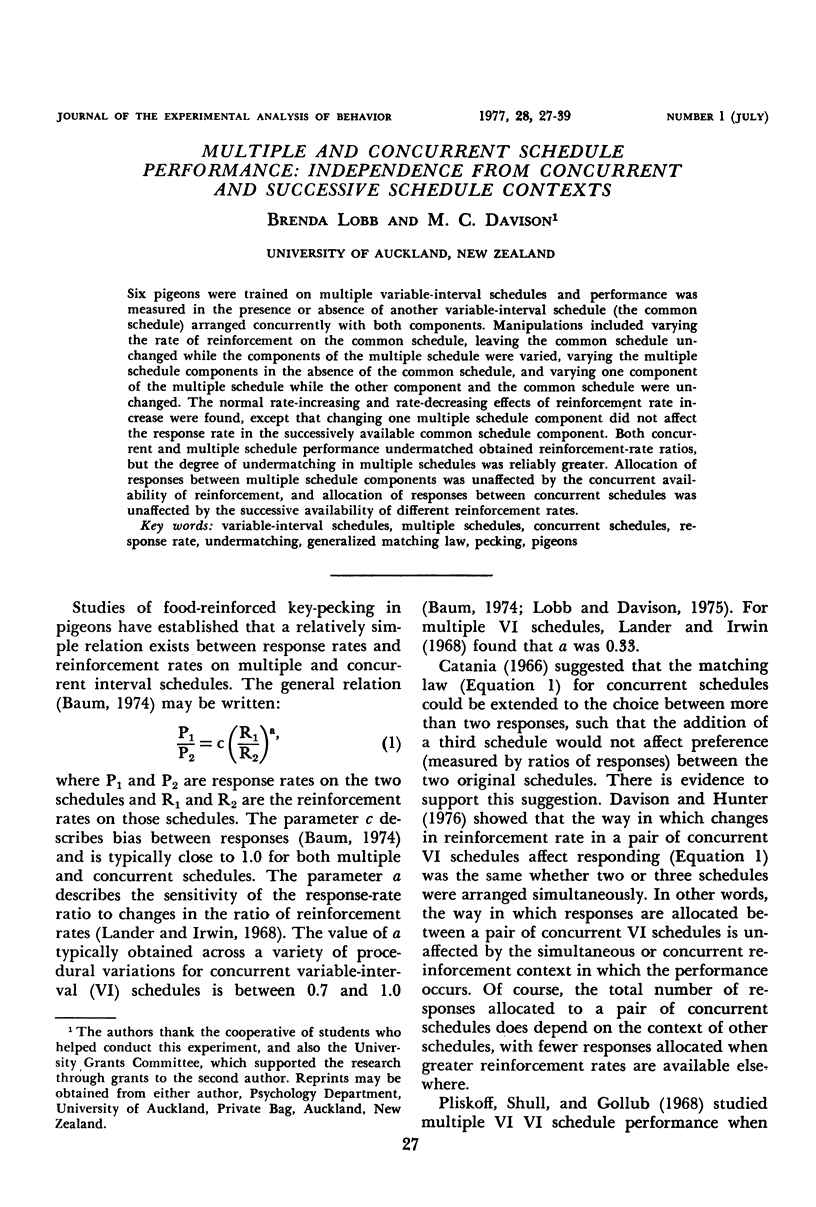
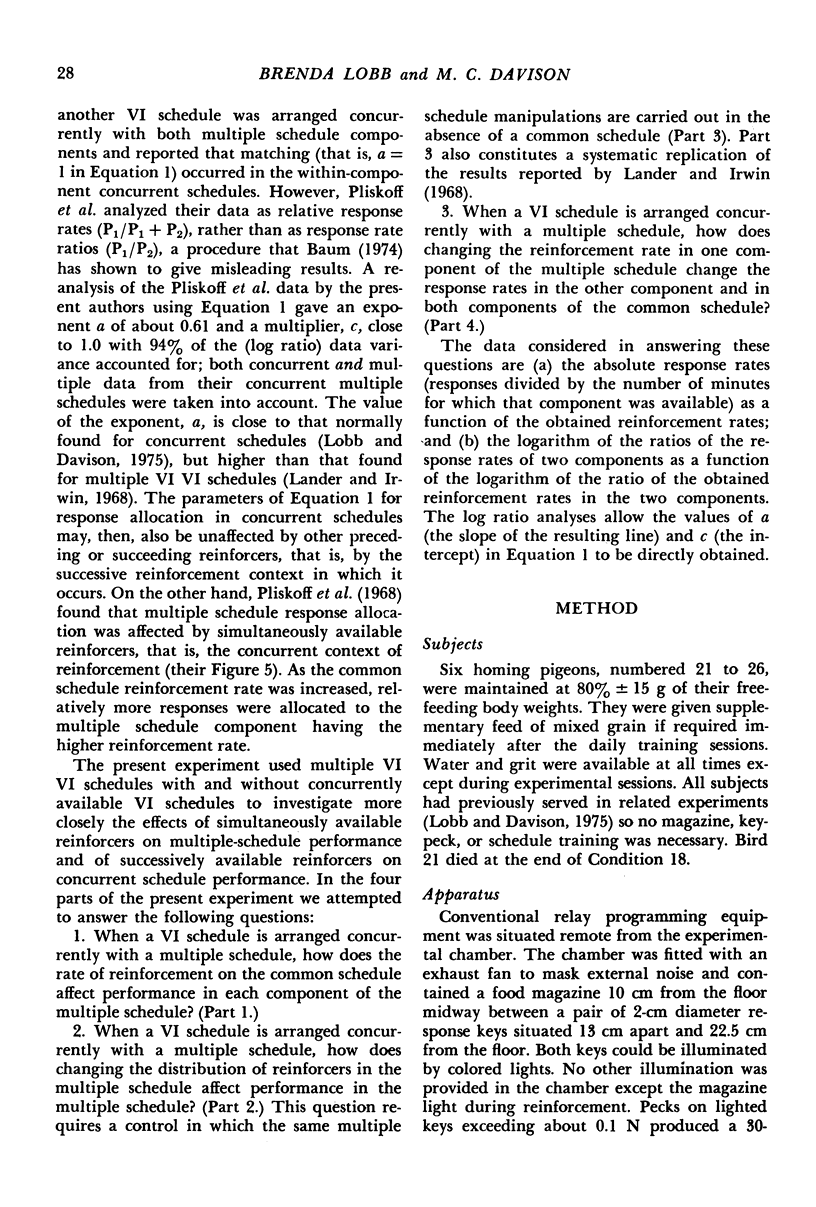




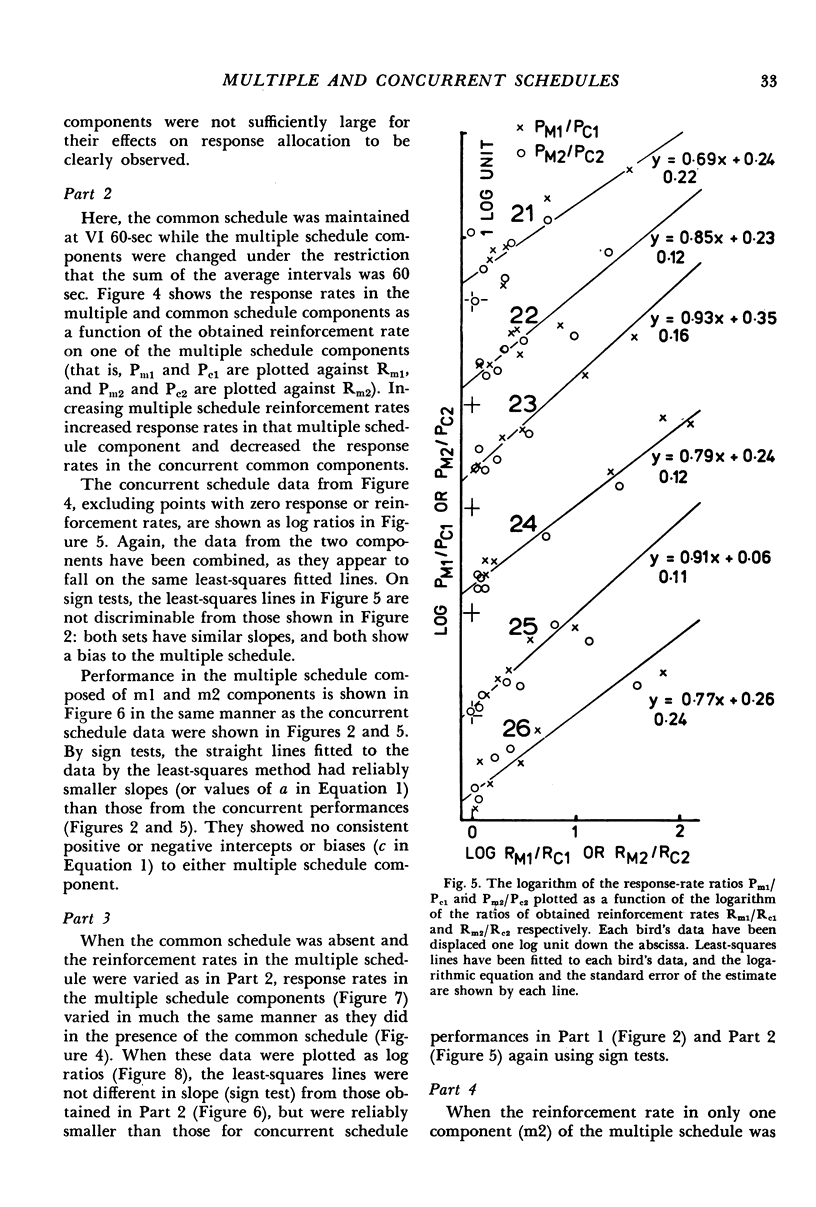
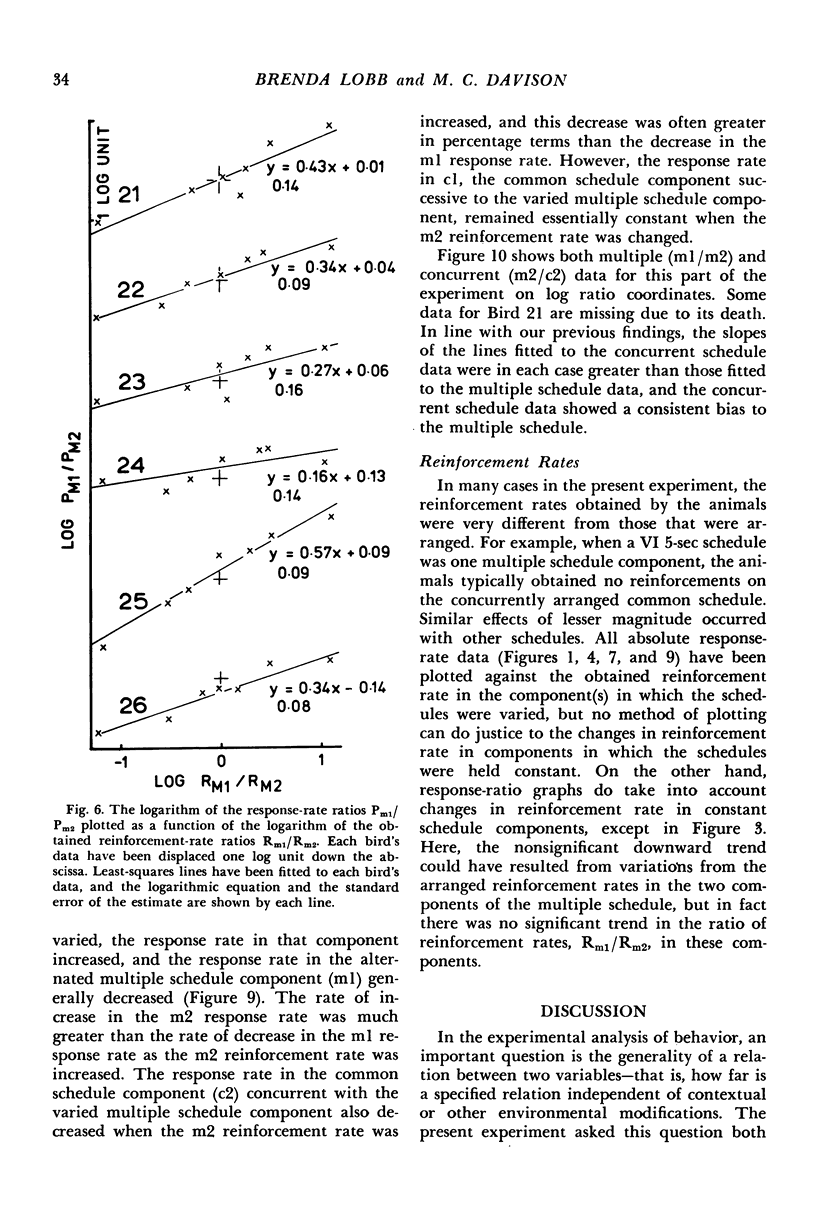
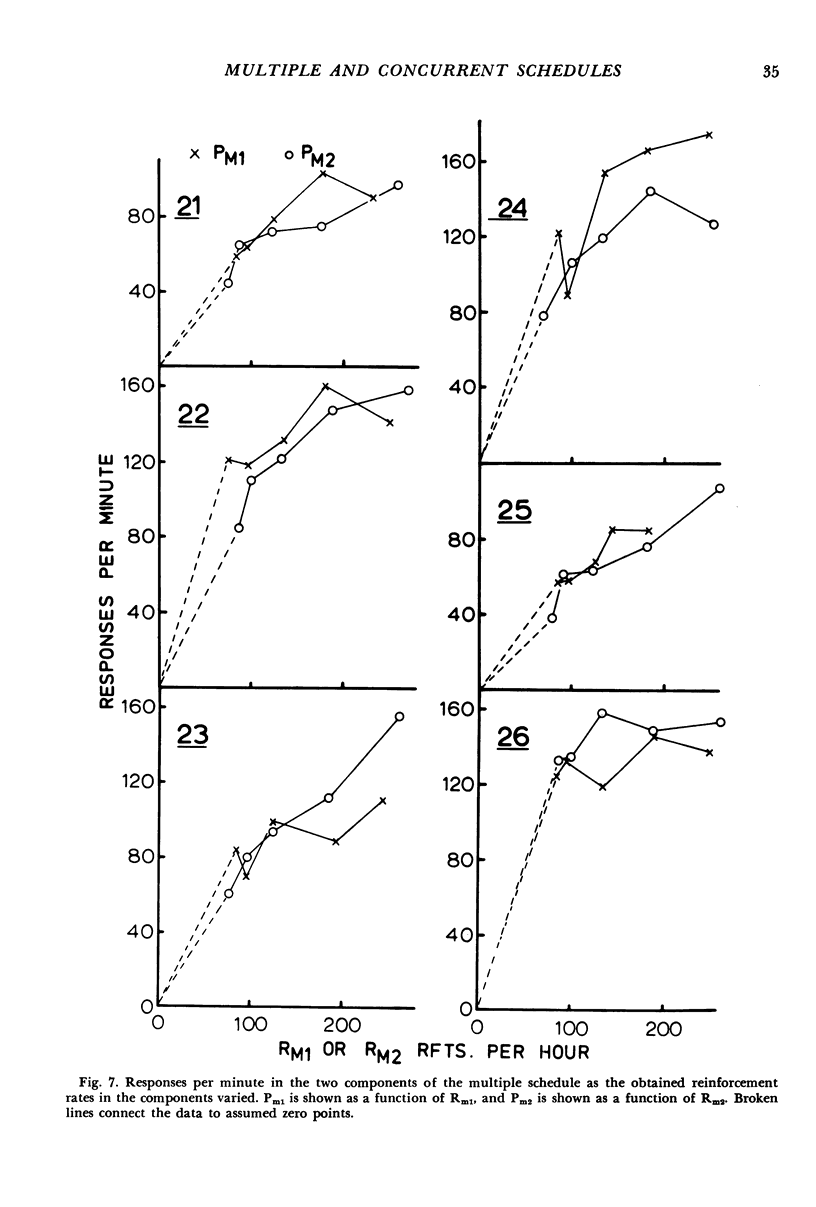
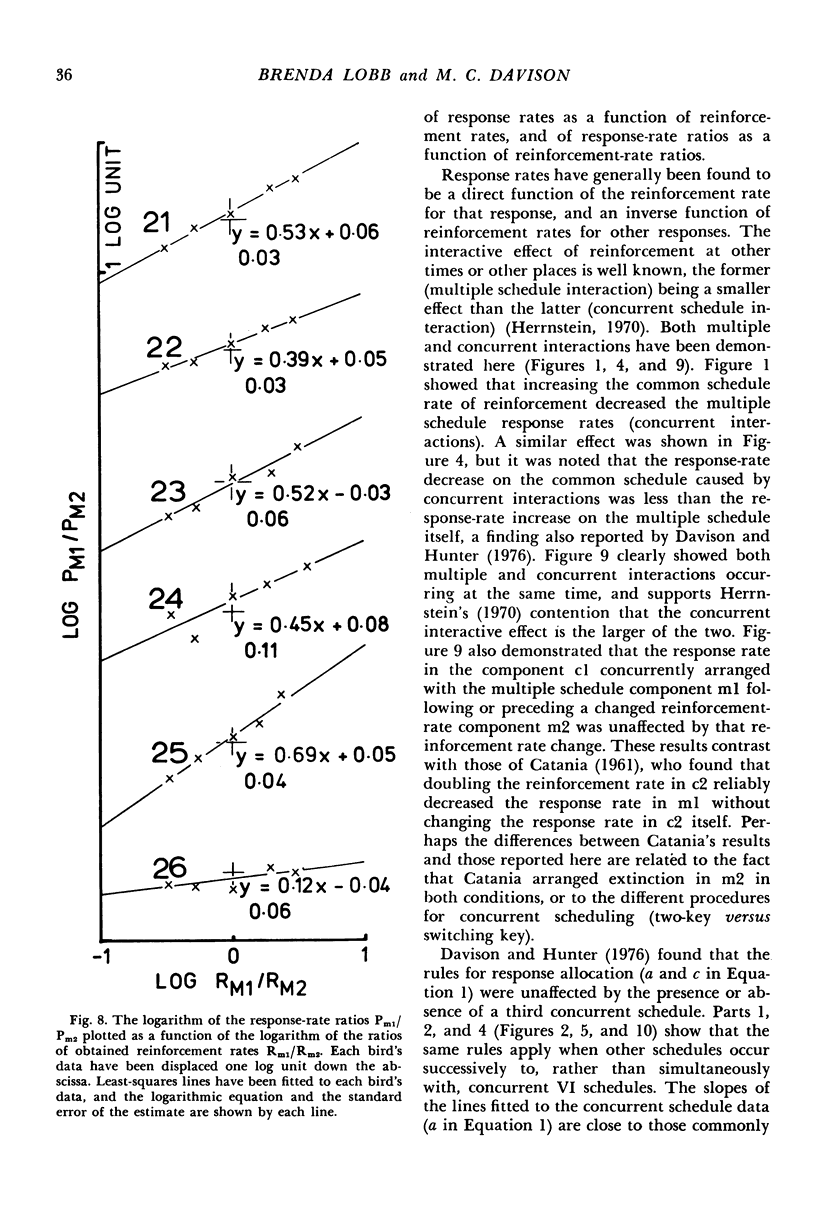
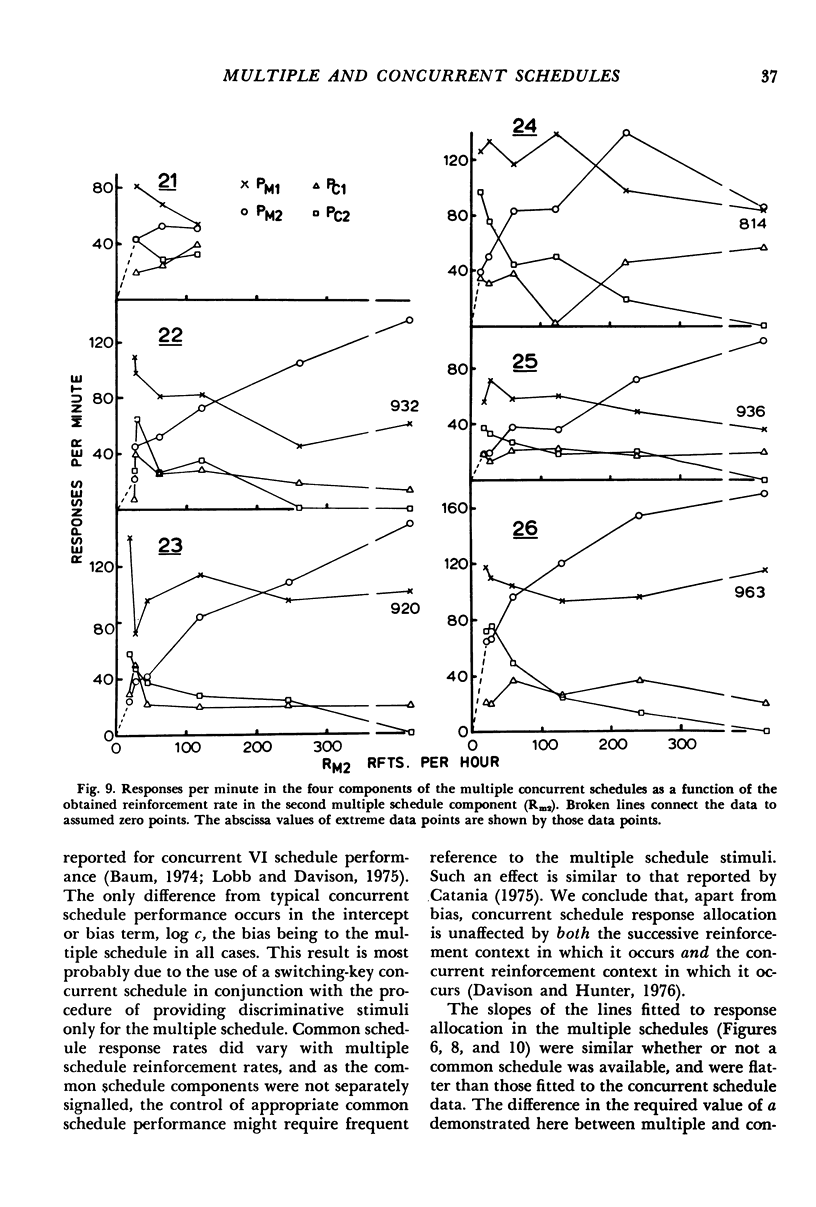
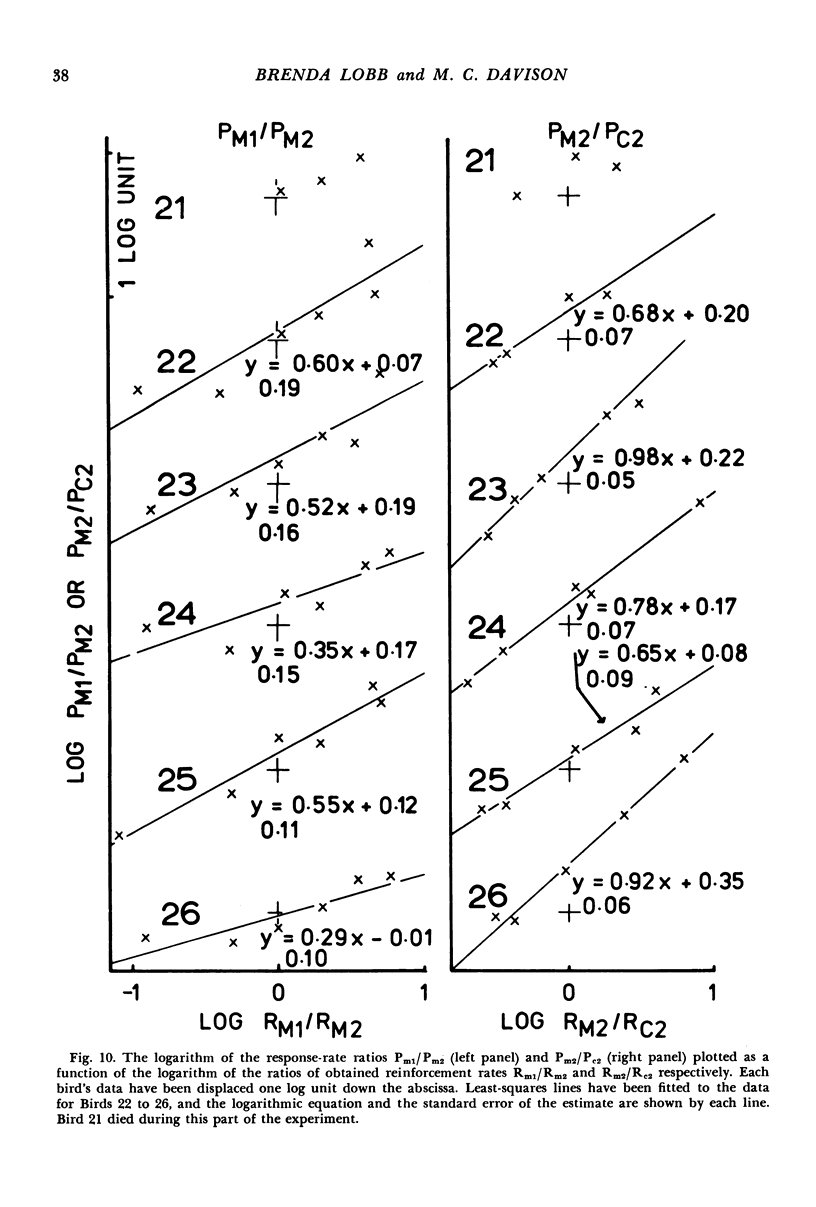
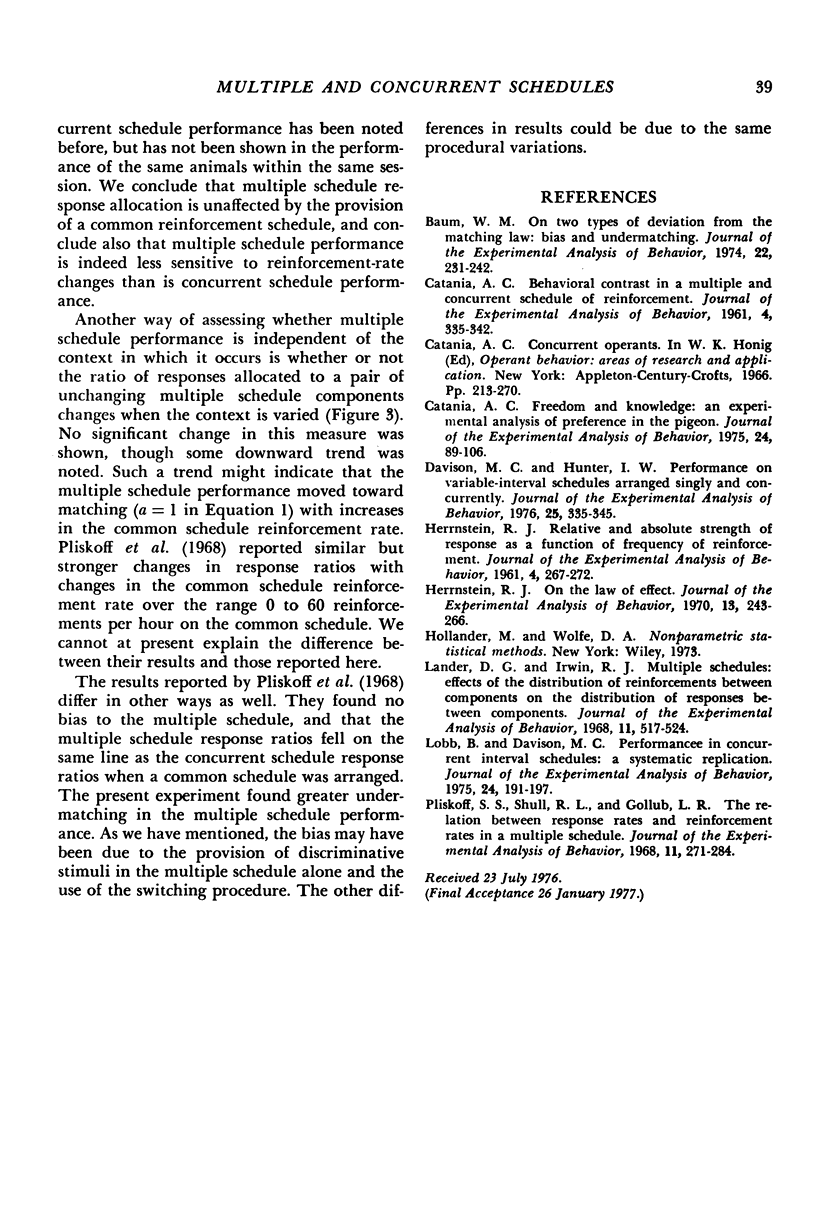
Selected References
These references are in PubMed. This may not be the complete list of references from this article.
- Baum W. M. On two types of deviation from the matching law: bias and undermatching. J Exp Anal Behav. 1974 Jul;22(1):231–242. doi: 10.1901/jeab.1974.22-231. [DOI] [PMC free article] [PubMed] [Google Scholar]
- CATANIA A. C. Behavioral contrast in a multiple and concurrent schedule of reinforcement. J Exp Anal Behav. 1961 Oct;4:335–342. doi: 10.1901/jeab.1961.4-335. [DOI] [PMC free article] [PubMed] [Google Scholar]
- Catania A. C. Freedom and knowledge: an experimental analysis of preference in pigeons. J Exp Anal Behav. 1975 Jul;24(1):89–106. doi: 10.1901/jeab.1975.24-89. [DOI] [PMC free article] [PubMed] [Google Scholar]
- Davison M. C., Hunter I. W. Performance on variable-interval schedules arranged singly and concurrently. J Exp Anal Behav. 1976 May;25(3):335–345. doi: 10.1901/jeab.1976.25-335. [DOI] [PMC free article] [PubMed] [Google Scholar]
- HERRNSTEIN R. J. Relative and absolute strength of response as a function of frequency of reinforcement. J Exp Anal Behav. 1961 Jul;4:267–272. doi: 10.1901/jeab.1961.4-267. [DOI] [PMC free article] [PubMed] [Google Scholar]
- Herrnstein R. J. On the law of effect. J Exp Anal Behav. 1970 Mar;13(2):243–266. doi: 10.1901/jeab.1970.13-243. [DOI] [PMC free article] [PubMed] [Google Scholar]
- Lander D. G., Irwin R. J. Multiple schedules: effects of the distribution of reinforcements between component on the distribution of responses between conponents. J Exp Anal Behav. 1968 Sep;11(5):517–524. doi: 10.1901/jeab.1968.11-517. [DOI] [PMC free article] [PubMed] [Google Scholar]
- Lobb B., Davison M. C. Performance in concurrent interval schedules: a systematic replication. J Exp Anal Behav. 1975 Sep;24(2):191–197. doi: 10.1901/jeab.1975.24-191. [DOI] [PMC free article] [PubMed] [Google Scholar]
- Pliskoff S. S., Shull R. L., Gollub L. R. The relation between response rates and reinforcement rates in a multiple schedule. J Exp Anal Behav. 1968 May;11(3):271–284. doi: 10.1901/jeab.1968.11-271. [DOI] [PMC free article] [PubMed] [Google Scholar]


